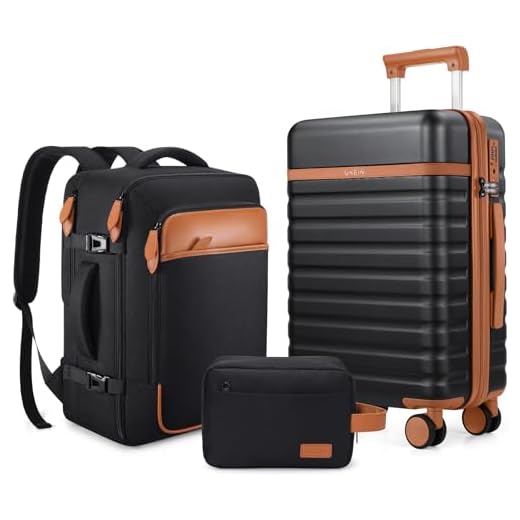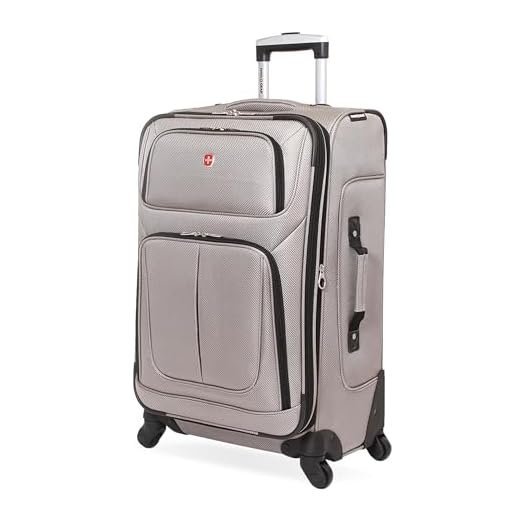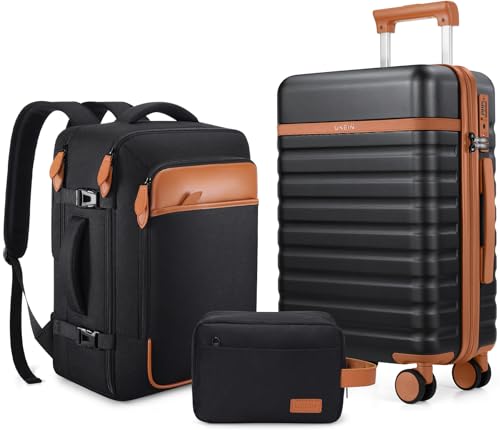





For travelers prioritizing durability and weather resistance, hard-shell options stand out. These carriers typically feature robust exteriors that guard against impacts and harsh conditions, making them ideal for frequent flyers or users who check their bags regularly.
Conversely, those valuing versatility and weight might find soft-sided alternatives advantageous. They often come with expandable compartments, allowing for increased packing space, while their lightweight nature makes maneuvering through bustling airports a breeze. Additionally, fabric constructions often include external pockets for easy access to essentials during transit.
Ultimately, the decision leans on personal travel habits and specific needs. Analyze your packing style, preferred destinations, and frequency of travel to choose the most suitable option that aligns with your lifestyle.
Durability Comparison: Cloth vs Plastic
For rigorous travel, options made from synthetic fibers generally offer superior resistance to wear and tear compared to those crafted from treated thermoplastics. Strong fabrics can withstand abrasions, sustain varying weather conditions, and adapt to rough handling from transport services.
Fabric Durability
- High-denier nylon or polyester withstands rips and punctures.
- Water-resistant coatings enhance longevity against moisture damage.
- Reinforced stitching reduces seam failures during transit.
Thermoplastic Resilience
- Hard shells provide robust protection against impacts and crushing forces.
- Scratch-resistant exteriors maintain a neat appearance over time.
- Sealed closures prevent moisture from entering, although internal damage can occur from hard blows.
Consider the nature of the travel and the potential hazards. If travels often involve heavy handling or risky environments, options with reinforced fibers may be ideal, whereas those prioritizing a sleek and polished look may lean towards sturdier hard-case variants. Choosing wisely can significantly impact the lifespan of your travel gear.
Weight Considerations for Travel
Opt for lighter materials that promote ease of transportation and comply with airline restrictions. Choose items that weigh around 4-7 pounds for carry-on options and 10-15 pounds for checked versions. Balance durability and weight as rigid cases may add extra ounces, while fabric types often weigh less but might lack structural integrity.
Assess the weight of your packed items versus the bag itself. Aim for a total combined weight that doesn’t exceed 50 pounds for checked items to avoid additional fees. Utilize digital scales to weigh your belongings accurately. This is especially relevant for multi-stop itineraries where mobility is key.
Consider the nature of your trip. For hiking or long walks in urban areas, lighter alternatives are advantageous. Ensure easy handling by testing the weight and balance of your choice by loading it prior to your journey.
Prioritize compartments and pockets in your selection for better organization without significantly increasing weight. Streamlined designs often allow for packing efficiency without compromising on capacity.
Invest in lightweight alternatives designed with travel in mind, as these are optimized for the best support-to-weight ratio, ensuring comfort and convenience throughout your travels.
Storage and Packing Efficiency
For optimal packing and space utilization, selecting the right type of travel bag highly influences the outcome. Fabric models typically offer a greater degree of flexibility when it comes to squeezing into tight spaces, thanks to their softer sides. This characteristic allows for better accommodation of irregularly shaped items, making them ideal for fitting into car trunks or overhead aircraft compartments.
Compartments and Organizational Features
Bags designed from textile materials often include multiple pockets and compartments, enhancing organization. These additional features facilitate the separation of clothing, toiletries, and gadgets, minimizing the time spent searching for items during travels. In contrast, hard-shell options may provide limited internal design, which can hinder easy accessibility.
Expansion Possibilities
Many soft-sided variations come with expandable zippers, allowing for extra space when needed. This flexibility can accommodate unexpected purchases or packing needs without requiring a second bag. Hard-sided varieties generally lack this adaptability, enforcing strict limits on capacity even if overstuffing is technically possible.
| Feature | Soft-Sided | Hard-Sided |
|---|---|---|
| Space Accommodation | Highly flexible | Fixed shape |
| Pocket Organization | Multiple compartments | Limited internal design |
| Expandable Capacity | Often available | Not common |
| Weight Distribution | More balanced | May be top-heavy |
The ability to adjust packing strategies based on needs is highly advantageous for travelers. Choosing the correct style can significantly impact how efficiently one can organize and store items, ensuring a smoother travel experience.
Maintenance and Cleaning Requirements
Choosing between fabric and synthetic materials hinges on their upkeep. Synthetics generally require less effort, as they can be wiped clean with a damp cloth and are often resistant to stains and moisture. In contrast, materials can absorb spills and odors, necessitating more thorough cleaning methods, such as washing or specialized stain treatments.
Cleaning Techniques
For synthetic options, mild soap and water suffice for most situations. If deeper cleaning is necessary, a gentle cycle in the washing machine is usually safe, but always check manufacturer guidelines. For fabric types, manual hand-washing or using a brush with a mild detergent is often recommended to avoid damage. Spot cleaning is essential for stains, with the use of fabric-specific cleaners when appropriate.
Long-Term Care
Storing the alternatives properly enhances longevity. Avoid damp areas to prevent mold growth, especially with fabric cases. Periodically check zippers and seams, applying lubricants or repairs as needed. For those looking for practical and stylish travel accessories, consider exploring best luggage gifts for men that align with your cleaning and maintenance practices.
Cost Analysis: Long-term Value of Each Option
Investing in travel bags means considering longevity alongside initial purchase price. Typically, soft-sided goods come with a lower price tag compared to their hard-sided counterparts. However, over time, the latter often proves advantageous due to their sturdiness and resistance to wear and tear.
Replacement cycles for soft models average every 2-3 years, depending on usage intensity. In contrast, hard cases can last a decade or longer if maintained appropriately, leading to reduced long-term costs. Consider that frequent purchases result in accumulated expenses that can surpass the single investment in a durable alternative.
Additionally, it’s important to evaluate repair potential. While minor damages to soft models may be easily fixed, significant repairs can lead to higher costs. Hard options tend to avoid these issues, providing better value over time.
When calculating total expenditure, don’t neglect warranty details and service options. More reliable brands often come with comprehensive protection plans, safeguarding your investment for years to come.
In conclusion, analyzing the total lifespan and care needs points to significant future savings with sturdy options. For those eyeing personal growth tips, check this insightful rendition on how can a capricorn woman attract a sagittarius man.
FAQ:
What are the primary advantages of using cloth luggage compared to plastic luggage?
Cloth luggage typically offers several benefits, such as durability and flexibility. Unlike plastic, which can crack or shatter upon impact, cloth can better absorb shocks and is less likely to sustain serious damage. Additionally, cloth bags are often lighter than their plastic counterparts, allowing you to maximize packing without exceeding weight limits. The outer material can also provide a more refined look and may come in various colors and patterns, catering to personal style preferences. Furthermore, cloth luggage often has exterior pockets and compartments that enhance storage options.
What are the downsides of cloth luggage compared to plastic luggage?
While cloth luggage has its advantages, it also presents some drawbacks. One major issue is that fabric can be susceptible to stains and may not be as easy to clean as plastic surfaces. Additionally, cloth often lacks the waterproof properties of some plastic luggage, making it less suitable for wet environments or situations where it might be exposed to liquids. Over time, cloth can show signs of wear, such as fraying or tearing, especially if not taken care of properly. Plastic luggage, on the other hand, tends to be more robust against rough handling, and many designs offer a sleek, modern appearance that some travelers prefer.







